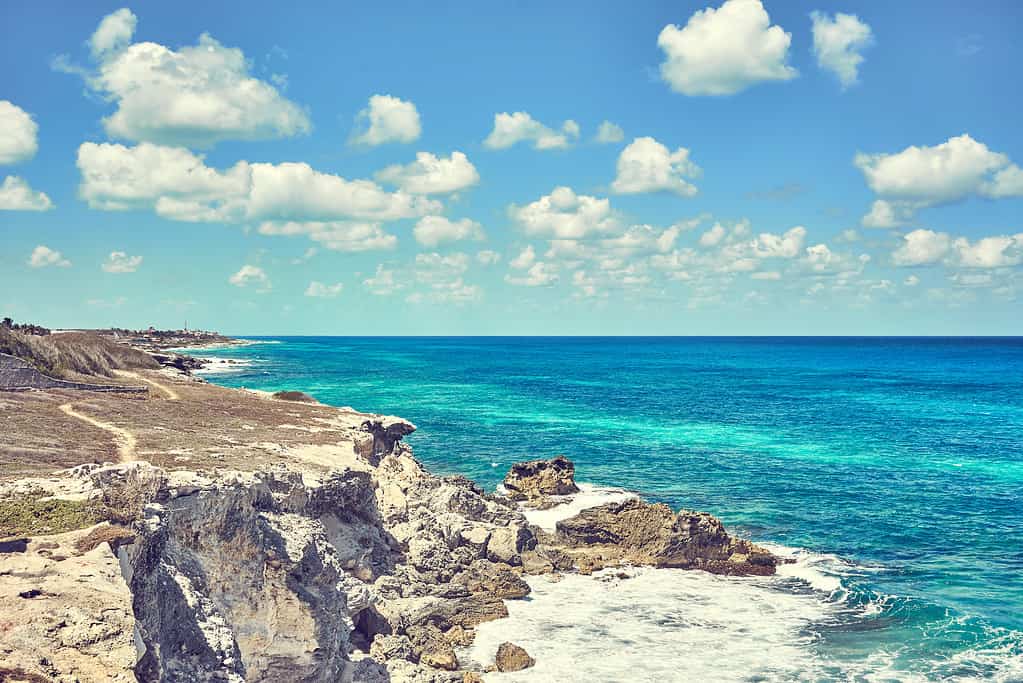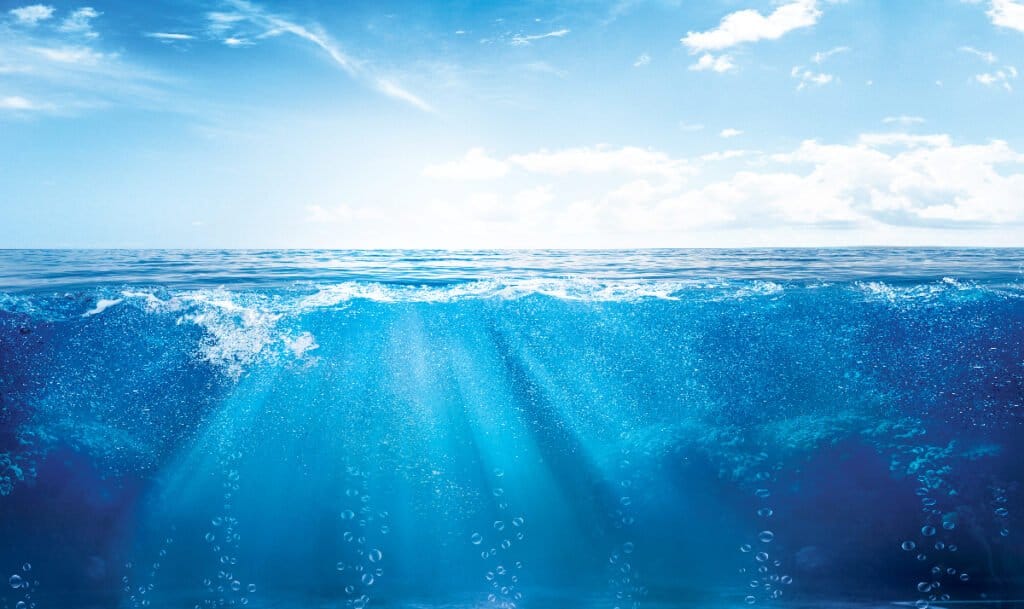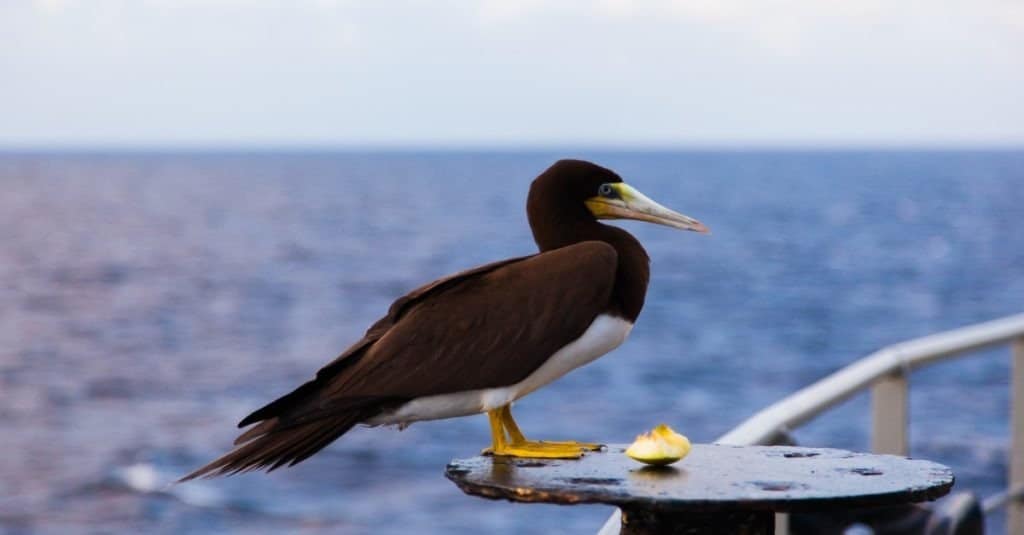Hawaii, known as the birthplace of cliff diving, has a rich history of this exhilarating sport. One of the best locations is at the southernmost point of the United States—Hawai’s South Point. This spot is famous for its adrenaline-pumping jumps, offering heights that range from 40 to 60 feet. But think twice before you leap! Getting back up the cliff is no easy task.
First, you have to be a strong swimmer to fight your way to the ladder. And once you’re on the ladder, you’ll have to use all of your upper body strength to hang on. Strong winds are constantly blowing, making the climb back up a real challenge. And in this faraway place, help might take hours to arrive in an emergency.
Make your trip as safe as possible by knowing what to expect. Keep reading to learn all about the South Point cliff jump.
Overview of the South Point Cliff Jump

South Point is in the southernmost part of the United States.
©marako85/iStock via Getty Images
South Point is located in the southernmost part of the United States, and it’s only 1.5 miles away from rare green sand beaches. The cliff’s height ranges from 40 to 60 feet, and there are crystal-clear waters below. This place is not only geographically special but also historically significant as the landing spot for Polynesian explorers back in 750 AD.
Sea Cave
Standing on the Hawaii cliffs, you’ll find yourself above a sea cave. This might make it a bit safer if you want to jump into the water since there’s less of a chance of hitting something. But, it’s still risky. Around the cliff, you’ll find clear signs telling you not to jump. It’s a reminder that even though it might look safe, jumping can be really dangerous.
No Amenities
When visiting South Point, it’s a good idea to bring a picnic because there are no facilities available on-site. However, you can often find local vendors selling a variety of treats along the road leading to Ka Lae.
Nearby Attractions
After exploring the jump site, check out what the rest of the area has to offer like the nearby Kula Kai Caverns, Green Sand Beach, and Punalulu Black Sand Beach. Alternatively, you can visit the Ka Lae lighthouse, which has been standing at the tip of the point since 1906.
Jumping Platforms and Access
You can easily locate the jumping platforms at the cliff’s summit. These platforms are atop a massive sea arch, visible from both the ocean and a collapsed sea cave. A wooden stand marks the jump spot, and a ladder is there to help divers climb back up after taking the leap.
Wobbly Ladder Climb
The excitement doesn’t end with the jump; there’s also the challenge of getting back up. To return to the top, swimmers must rely on a ladder attached to the cliffside. This ladder is unsecured, making it wobbly and demanding a good level of physical fitness to navigate, particularly in windy conditions. It’s so intense some find the climb back up scarier than the jump.
And here’s a scary thought, if the ladder were to collapse, there would be no other way to get back up. At least not without getting help from emergency services. This is why you should never ever go alone for any type of cliff dive. Even if you’re not jumping, you should still bring a friend or two. You don’t want to be left alone if something goes wrong.
Ideal Timing and Safety Tips

Experienced cliff divers know to only make the jump when the sea is calm and the skies are clear.
©PHOTO JUNCTION/Shutterstock.com
Cliff jumping is the kind of experience you’ll never forget. But there are some real dangers you should know about. It’s not something to mess around with, and you should only do it when the conditions are just right.
What are the right conditions for jumping off a cliff? Experienced cliff divers know to only jump when the sea is calm, the skies are clear, and you can see the water clearly. If it’s windy or the water is choppy, it’s a smart move to wait for a better day.
Typically the best time to go cliff jumping is during the summertime. In the winter, the waves can get really rough and huge, so it’s not ideal. April and May are a couple of the top months for this activity. During these months, you’ll find fewer people, lower prices, great weather, and favorable ocean conditions.
If you’re not experienced with ocean conditions and currents in this area, cliff jumping might not be your thing. If you’re unsure about safety or you’re worried about getting back up after the jump, it’s a good idea to think twice. Remember, the long climb back up is tough. Not only is the ladder old and wobbly, the winds at South Point are intense.
Don’t Get Swept Away
Before taking the leap, there’s a potential danger to be aware of: the risk of getting swept away! South Point is infamous for its powerful coastal winds, which are evident in the way trees in the area grow at an angle. The gusts are so powerful there’s even a wind farm nearby. Constructed from 2006 to 2007, the Pakini Nui Wind Farm takes advantage of the strong winds to generate electricity.
Can You Jump Anywhere?
When you’re at South Point on the Big Island of Hawaii, you can’t simply take a leap from any old cliff. The entire coastline has cliffs, but jumping from any random spot is a risky move. You need to find a specific location for cliff jumping, one that people have been using for a long time.
How to Get There

Tourists can hire a driver or rent a car and then drive to South Point.
©iStock.com/PeopleImages
When it comes to getting to South Point on the Big Island, you have a couple of options. You can hire a driver or rent a car. If you’re renting, regular cars are perfectly suitable for accessing the cliff top safely. There’s no need for a 4×4 vehicle.
Long Ride
South Point is approximately 1.5 hours south of Kona, and there isn’t a whole lot to see along the way. To make the journey more enjoyable, consider coming prepared with snacks and a fun music playlist to keep the adventure lively.
Hawaii Belt Road
You can reach the cliff by following the Hawaii Belt Road, which circles the island. Simply turn onto South Point Road from the Hawaii Belt Road, and continue until you reach the coast. South Point Road is a 12-mile paved but narrow road that branches off from Hawaii Belt Road (State Route 11). Ka Lae Hawaii is at the end of South Point Road, just past the lighthouse.
Parking
South Point is easily reachable from a compact parking lot. The cliff jumping spot is only around 100 feet from the small parking area where visitors can park their cars. Play it safe and be sure to lock your car and hide valuables out of site. Also, keep in mind that South Point isn’t always crowded with tourists, so be ready for fewer people around.
Papakolea Beach or Green Sand Beach
The South Point Cliff jump is just a quick 4-minute drive away from one of the world’s rare green sand beaches, Papakolea Beach. It’s one of only four green sand beaches in the world. The remarkable color of the sand comes from yellow-green olivine crystals, a mineral that forms from magma rich in magnesium and low in silica. When olivine is translucent and of high quality, it’s known as peridot, a precious gemstone.
Because it’s in Mahana Bay, the beach is surrounded by Puu Mahana, a type of cinder cone. Cinder cones are one of the most common types of volcanoes. They formed around the beach more than 49,000 years ago during the southwest rift eruption of Mauna Loa.
Hike to the Green Sand Beach
After parking, it’s time to hike the rest of the way to the green sand beach! The round trip is approximately 5.5 miles long and involves an elevation gain of 275 feet. While it’s not an exceedingly challenging hike, the terrain can be uneven, so it’s a good idea to wear hiking shoes for better comfort and safety.
Begin your journey at the trailhead, and from there, head northeast on the 2.8-mile coastal trail that will lead you to the beach. The beach area itself is somewhat steep, so you’ll want to follow the existing trail down to reach it.
Make sure to prepare for your hike by bringing a supply of water and snacks. There are no amenities in the area, so it’s important to have what you need to stay hydrated and energized during your visit.
Wildlife in the Area: Bird Species

While visiting South Point you might spot the brown booby or other sea birds.
©ZHMURCHAK/Shutterstock.com
South Point isn’t known for being a birding hot spot, but bring your binoculars just in case. The Big Island is famous for its unique bird species you won’t find anywhere else. You might even spot some of the rarer and more unusual sea birds like the Hawaiin petrel.
Here are some of the birds you might encounter:
- Pacific Golden-Plover
- Eurasian Skylark
- Waxbills
- Yellow-fronted Canary
- Saffron Finch
- Bristle-thighed Curlew
- Wandering Tattler
- Ruddy Turnstone
- Inca Tern
- Yellow-billed Tropicbird
- Wedge-tailed Shearwater
- Great Frigatebird
- Brown Booby
- Hawaiian Noddy
- Laysan Albatross
- Black-footed Albatross
- Hawaiian Petrel
The Yellow-Billed Tropicbird, known as “Kooi” locally, is a striking bird that nests in cliffs near tropical oceans. It’s easily recognizable by its all-white feathers and bright yellow beak. When it flies, you can spot it by the bold black bars on its wings.
You can find the Yellow-Billed Tropicbird on Kauai, Oahu, Maui, and the Big Island. While it’s common in its tropical breeding areas, you won’t find it near the mainland coasts very often. It’s found all across the tropical Pacific, especially on islands with cliffs suitable for nesting, like Tahiti and American Samoa.
Hawaiian Hoary Bat
You might also see some bats! Depending on the timing of your visit, you might see the bats as they leave their roost. The Hawaiian hoary bat is Hawaiian’s only native land mammal. These nocturnal creatures arrived in Hawaii around 1 million years ago from North America. They can fly an impressive 13 mph on their nightly hunts for food.
History of South Point
South Point is one of the earliest settlements in the Hawaiian Islands. The Polynesian migration to Hawai’i was a big part of their broader effort to settle the vast central Pacific islands. This involved exploring and colonizing remote and widely scattered islands. European explorers didn’t enter the Pacific Ocean until the 16th century, by which time most livable islands in the Pacific had been inhabited for centuries. The voyages of the Polynesians were especially remarkable because they relied on primitive tools made from stone, bone, and coral.
Fishing Settlement
In 1956, archaeologists discovered evidence of ancient Hawaiian life at the Pu’u Ali’i sand dune on site. They found the remains of a house, a fire pit, and an impressive collection of over 14,000 artifacts. Coral and stone tools, as well as different types of large fish hooks, helped provide a glimpse into what life was like for early settlers. It’s now confirmed that for more than a thousand years, this place was both a fishing hub and a settlement.
Canoe Construction
The canoe hulls were fashioned either by hollowing out tree trunks using adzes or by crafting them from planks sewn together. The sewing of planks was accomplished using cordage made from coconut fiber.
To deal with the strong waters, ancient Hawaiians drilled mooring holes in the rock ledges on the plateau. They would then thread strong ropes through these holes to secure their canoes and let the currents carry them to the best fishing spots without the risk of being swept out to sea. You can still see evidence of the mooring holes today.
Salt Pans
The South Point location also has a bunch of salt pans carved into the lava rock. These shallow, rectangular pans were filled with ocean saltwater, which would evaporate, leaving behind salt used for preserving fish.
Kalalea Heiau: Ancient Fishing Shrine
At South Point, there’s also the Kalalea Heiau, an ancient fishing shrine. The shrine is dedicated to Ku’ula, the god of fishing. Legend has it that this god was a skilled fisherman with supernatural powers or mana kupua. His powers allowed him to control and direct the fish of the sea.
The heiau or shrine honoring the fishing god is surrounded by stone walls, forming a nearly perfect square. There’s also a platform outside for fish preparation or making offerings. Local fishermen still visit the shrine to give offerings in the hopes of a good catch. South Point remains a popular spot for fishermen, with ulua, red snapper, mahimahi, and marlin being common catches. Other fish found in these waters include tuna opelu, yellowfin tuna, and snapper.
The photo featured at the top of this post is © marako85/iStock via Getty Images
Thank you for reading! Have some feedback for us? Contact the AZ Animals editorial team.






